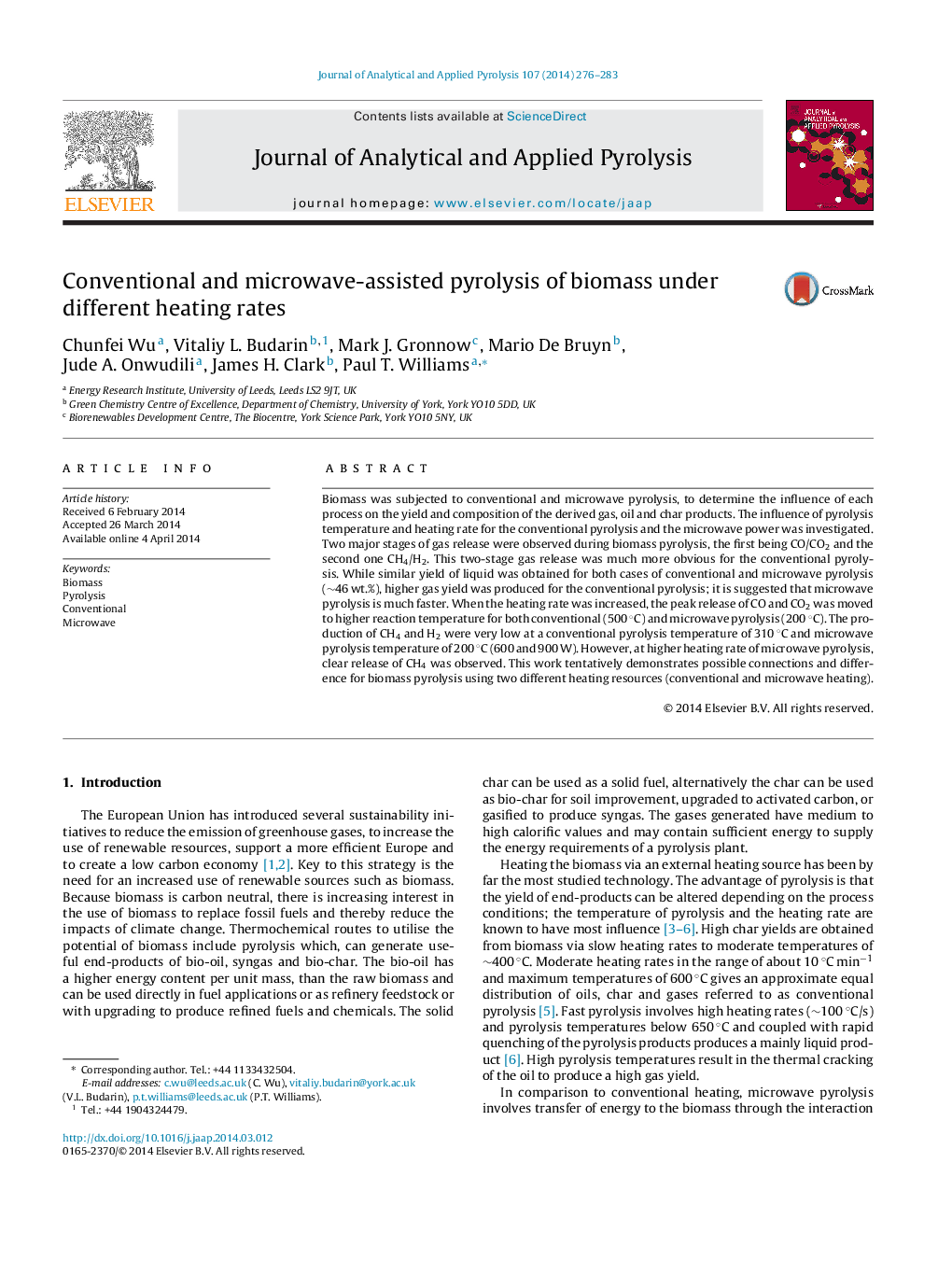| Article ID | Journal | Published Year | Pages | File Type |
|---|---|---|---|---|
| 1198313 | Journal of Analytical and Applied Pyrolysis | 2014 | 8 Pages |
•Conventional and microwave pyrolysis of biomass has been compared.•Conventional pyrolysis produces higher gas yield.•Microwave pyrolysis produces more char.•Two stages of gas release are seen, first CO & CO2 and second CH4 & H2.
Biomass was subjected to conventional and microwave pyrolysis, to determine the influence of each process on the yield and composition of the derived gas, oil and char products. The influence of pyrolysis temperature and heating rate for the conventional pyrolysis and the microwave power was investigated. Two major stages of gas release were observed during biomass pyrolysis, the first being CO/CO2 and the second one CH4/H2. This two-stage gas release was much more obvious for the conventional pyrolysis. While similar yield of liquid was obtained for both cases of conventional and microwave pyrolysis (∼46 wt.%), higher gas yield was produced for the conventional pyrolysis; it is suggested that microwave pyrolysis is much faster. When the heating rate was increased, the peak release of CO and CO2 was moved to higher reaction temperature for both conventional (500 °C) and microwave pyrolysis (200 °C). The production of CH4 and H2 were very low at a conventional pyrolysis temperature of 310 °C and microwave pyrolysis temperature of 200 °C (600 and 900 W). However, at higher heating rate of microwave pyrolysis, clear release of CH4 was observed. This work tentatively demonstrates possible connections and difference for biomass pyrolysis using two different heating resources (conventional and microwave heating).
